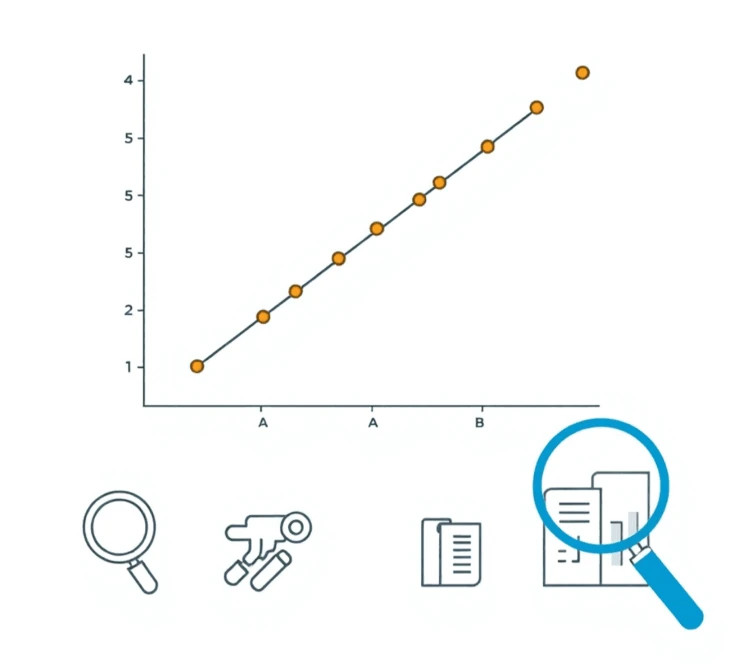A successful research paper, thesis, or dissertation begins with a thorough literature search. This process lays the groundwork for your study by ensuring you are building on solid, existing knowledge and not duplicating previous work. Without a comprehensive literature review, you risk missing critical findings, relevant theories, or...
Platform for Academic Ghostwriting and Research
What is Academic Ghostwriting?
Academic ghostwriting involves hiring professional writers to produce scholarly content on behalf of another individual, who is then credited as the author. This service can include various academic documents such as research papers, theses, dissertations, and even entire books. Ghostwriters are usually experts in specific academic fields and have a deep understanding of research methods, ensuring that the final product meets strict academic standards.
Why is Research Important in Academia?
Research is the foundation of academia. It drives innovation, expands knowledge, and influences policy decisions across different fields. Here's why research is so important:
- Expanding Knowledge: Research explores new ideas and theories, filling gaps in understanding and providing a basis for future studies.
- Solving Problems: Through careful investigation and analysis, research tackles real-world issues and offers evidence-based solutions.
- Developing Skills: Engaging in research sharpens critical thinking, analytical skills, and rigorous methods - abilities valuable in both academia and various professions.
- Informing Practice: Research findings guide best practices and decision-making within industries, leading to more effective outcomes.
Given its crucial role in advancing knowledge and addressing pressing problems, high-quality research is vital for maintaining the credibility and progress of academic institutions.
The Need for Academic Ghostwriting Platforms
The growing demand for academic support services has led to the creation of specialized platforms for academic ghostwriting and research assistance. These platforms aim to connect individuals who need help with their academic work with skilled professionals who can provide that support.
Such platforms typically offer a range of services:
- Custom Writing: Tailored writing services for essays, research papers, theses, dissertations, articles, etc., designed to meet specific requirements.
- Research Assistance: Support with literature reviews, data analysis (e.g., using SPSS), hypothesis formulation, survey design, scoping reviews, meta-analysis preparation.
- Editing & Proofreading: Ensuring clarity, coherence, proper formatting (APA/MLA/Chicago), grammatical accuracy.
- Consultation Services: Guidance on topic selection, research design strategies.
These platforms prioritize confidentiality while ensuring that all work adheres strictly to ethical guidelines. By providing access to expert writers with advanced degrees across various disciplines - ranging from social sciences to engineering - they cater directly to the unique needs presented by each client's project specifications. For individuals facing challenges due to time limitations or language barriers or lacking specific technical expertise required by their projects - these platforms serve as invaluable resources enabling them not just simply complete assignments but excel academically without compromising personal integrity or educational objectives. Through this comprehensive suite encompassing custom writing solutions coupled with extensive consultation resources - platforms dedicated towards fostering excellence within academia emerge pivotal contributors towards nurturing intellectual growth - ultimately empowering researchers along their journey toward scholarly achievement while upholding ethical standards integral within educational landscapes globally!
A case study is a detailed examination of a specific subject, usually involving a real-life situation, person, group, or organization. It is a valuable research method used to gain insights into the complexities, dynamics, and contextual factors related to the subject being studied. By combining both qualitative and quantitative data, case studies...
AI humanizer tools are designed to transform AI-generated text into content that appears more natural, human-like, and less detectable by AI detection software. These tools typically rephrase, restructure, or add nuances to the text to improve readability, flow, and authenticity. This makes the output more engaging and less robotic. With the...
A research proposal is a concise document that outlines a planned research project. It serves as a roadmap for your study, detailing what you intend to investigate, why it is important, and how you will carry out the research. This proposal is often required for academic theses, funding applications, or graduate school admissions.
Meta-analysis is a fundamental method in research that allows for a thorough and systematic way to combine and analyze quantitative results from various studies. This technique is particularly useful when dealing with different types of research designs, as it enables researchers to pool together data and obtain more reliable estimates of effect...
In the digital age, artificial intelligence (AI) has transformed academic writing with tools that make the process easier and more efficient. But, it's important for users to understand the major limitations of AI writing tools.
Open access (OA) publications refer to research outputs that are freely and immediately available online, breaking down barriers to knowledge that traditional paywalled journals create. These works, often published under Creative Commons licenses, ensure that anyone with internet access can read, download, and share scientific findings without...
Writing a college admissions essay can seem like a scary task, but with the right approach, it's an opportunity to show who you are beyond grades and test scores. Your personal statement is your chance to tell a story that highlights your values and demonstrates your potential to thrive in college life. In this blog post, we'll guide you through...
In academic research, understanding the relationship between variables is essential. One of the most commonly used methods to explore these variable relationships is correlational research. This non-experimental research approach allows researchers to examine the degree to which two or more variables are related without manipulating or controlling...
Readability is crucial for the success of any academic paper. A clear, precise, and well-structured text not only enhances understanding of academic papers but also increases citation chances in academic circles. In this blog post, we will explore simple and effective techniques for readable academic papers that will help you improve the...
Plagiarism is a serious issue in academic writing that can lead to severe consequences, including failing grades, academic penalties, and a damaged reputation. It refers to the act of using someone else's work, ideas, or expressions without proper acknowledgment—this is essential to understanding the plagiarism definition. Whether intentional or...
Writing a bachelor's thesis is an important milestone in your academic journey. If you're unsure about how to start your thesis, what information to include, or how to structure each chapter effectively, this guide—Writing a Bachelor's Thesis: Tips for the Perfect Thesis (Introduction, Methodology, Structure)—is here to help. A well-organized and...
Choosing a great thesis topic is a crucial step in academic research. A thesis topic refers to the specific subject you will explore in your thesis or dissertation, which is an extensive research paper focusing on a particular area of study. The topic not only defines the scope of your research but also guides you through the entire...
The discussion in a master's thesis plays a central role as it serves as the bridge between the results and the final conclusion. It is the place where you interpret your research findings, assess their relevance in the context of existing studies, and analyze their impact on the field of research. A well-structured discussion allows you to clearly...
Expert interviews in the master's thesis are a significant method of qualitative research. They allow for in-depth insights to be gained from professionals and for complex relationships to be understood. In empirical social research, expert interviews play a central role as they provide access to specific knowledge and practical experiences that...
Academic writing is a crucial part of every student's journey. One of the most common assignments you'll encounter is the essay. Whether you're in high school, college, or beyond, understanding different types of essays is essential for academic success.
















